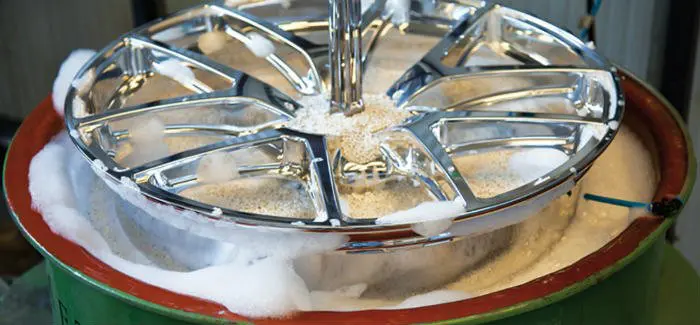Ceramic Polishing Dubai, Abu Dhabi and Al Ain :- Features of Best Ceramic Polishing Machines
Ceramic polishing is a technique of polishing the surface of a material to improve its appearance. The process involves applying abrasive material to a surface to achieve the desired effect. The type of polishing instrument used to accomplish this task varies. Some tools can be used for various types of ceramic materials, while others are only suitable for specific types of materials.
Industrial-grade ceramic polishing -
Industrial-grade ceramic polishing machines are available in the market, and they are often used for fine-tuning and surface enhancement. These vibratory finishing machines can perform a variety of functions, including deburring, chamfering, oxide film removal, and precious grinding. However, the results are not immediate and are dependent on many factors.
Made of different ceramic materials
Polishing tools contain abrasive particles embedded in a polymer binder. The particles can be made of different ceramic materials, and some are harder than others. Diamonds, for example, are a more aggressive and harder material than others. These particles can also vary in size. Larger particles are used in the initial stages of the Ceramic Polishing process, while smaller ones are used in later stages. The idea behind polishing is to create smaller scratches on the surface.
Four different CAD/CAM ceramics were used in the study. Sironia was used as the base material, while Vita and Kurararay were used as resin-ceramics. After calculating the results, the polishing methods used were compared. Each Ceramic Polishing method affected one surface of the ceramics.
More suitable for restoring ceramics with a glaze
The effectiveness of different polishing techniques is mainly dependent on the type of material used. Some materials may be more stain-resistant than others. For example, glazed glass-ceramic is less prone to staining than resin-ceramic. Similarly, a composite Ceramic Polishing kit may be more suitable for restoring ceramics with a glaze.
Despite the importance of polishing in a dental practice, the materials used in high strength restorations can be difficult to polish. In particular, polishing high strength ceramics can be difficult due to their hardness. Nevertheless, polishing is essential to improve esthetics, reduce the accumulation of plaque on ceramic surfaces, and preserve patient comfort.
The process of ceramic polishing -
Ceramic restorations often have roughened surfaces, and traditional methods of smoothening these surfaces often require reglazing. Recent advances in Ceramic Polishing technologies have sparked a high level of interest in studies comparing the effects of polishing on the glazed surface. In these studies, polishing using the latest polishing systems produced surfaces as smooth as the glazed surface.
The process of ceramic polishing includes deburring and descaling, as well as cleaning and polishing. The first two stages of the process help remove stains and other impurities. The second stage is used to remove rough edges and bends in the workpiece. The final step is to polish the parts to make them more appealing.
After this process, diamond wax is applied to the smooth surfaces. Then, a polishing wheel is applied on the glazed surfaces. The polishing wheel is rotated to produce a smooth surface. For the last two groups, the Ceramic Polishing process takes 40s, whereas for the sixth and seventh groups, the procedure takes 80s.
vinylflooring.ae
Call Now 056-600-9626, 04-2959449
or Email : info@vinylflooring.ae
Reach from map :
https://goo.gl/maps/Bqfv4DDkWCDyvoeJA
Follow us on :
https://www.facebook.com/Vinyl-Flooring-535983309917506/
https://www.pinterest.com/vinyl_flooring/
https://twitter.com/VinylFlooring5
We serve our clients across UAE in Dubai, Abu dhabi, Sharjah,Al Ain, Ajman,Al Fujairah and Umm al Quwain
Read more :
https://sisalrugs97.blogspot.com/2022/07/ceramic-polishing-dubai-abu-dhabi-and.html

Comments
Post a Comment